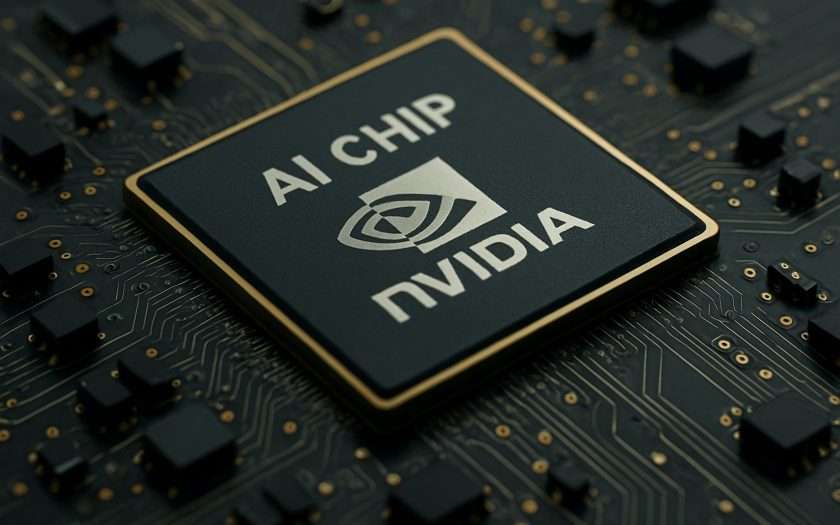 NVIDIA has released its Q2 FY26 earnings report, and the results continue to reinforce its leadership in the global AI chip market. With total revenue reaching $46.74 billion up 56% year-over-year, the company has once again exceeded expectations and solidified its position as the world’s most valuable publicly traded company. However, despite the impressive top-line growth, subtle signs of market saturation and geopolitical risk are beginning to surface.
NVIDIA has released its Q2 FY26 earnings report, and the results continue to reinforce its leadership in the global AI chip market. With total revenue reaching $46.74 billion up 56% year-over-year, the company has once again exceeded expectations and solidified its position as the world’s most valuable publicly traded company. However, despite the impressive top-line growth, subtle signs of market saturation and geopolitical risk are beginning to surface.
The standout figure in NVIDIA’s Q2 FY26 financial results is its data centre revenue, which came in at $41.1 billion. This segment remains the backbone of NVIDIA’s business, driven by surging demand for AI infrastructure across cloud providers, enterprise clients, and hyperscalers. Although the data centre revenue grew 56% compared to the same quarter last year, it narrowly missed analyst forecasts of $41.3 billion. This slight miss, in an otherwise stellar quarter, triggered a modest decline in NVIDIA’s stock price during after-hours trading, underscoring how tightly investor sentiment is tethered to perfection.
Based on non-GAAP numbers, NVIDIA’s net income for the quarter reached $25.78 billion, reflecting a 42% year-over-year increase. Adjusted earnings per share landed at $1.05, beating consensus estimates of $0.98. These figures highlight NVIDIA’s operational efficiency and pricing power in a market where demand for AI chips continues to outpace supply. The company’s gross margins remain robust, supported by its dominance in high-performance GPUs and its expanding software ecosystem.
One of the most significant challenges NVIDIA faced this quarter was the U.S. export ban on its H20 chips to China. The restriction, which was lifted in July, cost the company an estimated $8 billion in lost sales. While the regulatory environment has since improved, the episode highlights the geopolitical risks that could impact NVIDIA’s future earnings. In response, the company is reportedly developing China-specific AI chips designed to comply with export controls while maintaining competitive performance and profitability.
CEO Jensen Huang remains bullish on the long-term outlook for AI infrastructure. He projects Q3 FY26 revenue to reach $54 billion and estimates that global spending on AI could exceed $3 to $4 trillion by 2030. This vision aligns with broader industry trends, as enterprises continue to invest heavily in generative AI, machine learning, and data analytics platforms. However, analysts caution that the pace of growth may begin to moderate as the market transitions from early adoption to operational scaling.
NVIDIA’s capital return strategy also made headlines this quarter. The company returned $24.3 billion to shareholders through stock buybacks and dividends in the first half of FY26. This aggressive approach signals confidence in long-term profitability and provides a buffer against market volatility. At the same time, it raises questions about whether NVIDIA sees fewer reinvestment opportunities at its current scale, a potential indicator of a maturing growth cycle.
Strategically, NVIDIA continues to expand beyond hardware. The company is investing in AI software, networking solutions, and cloud services to create a more integrated ecosystem. These initiatives are designed to deepen customer lock-in and generate higher-margin revenue streams, especially as competition intensifies from AMD, Intel, and emerging players in the custom AI chip space.
As you can see from the above, NVIDIA’s share price was up 31.30% YTD. NVIDIA share price was down 3.14% yesterday after releasing its latest financial results. NVIDIA buy or sell? Is the dip an opportunity?
In conclusion, NVIDIA’s Q2 FY26 earnings reflect a company at the peak of its powers, but also one facing new complexities. The financial results are undeniably strong, driven by continued dominance in the AI chip market and robust data centre revenue. Yet, as regulatory risks and market expectations evolve, NVIDIA must navigate a more nuanced landscape. For investors, the takeaway is clear: NVIDIA remains a foundational player in the AI economy, but future growth will require strategic agility and global foresight.



